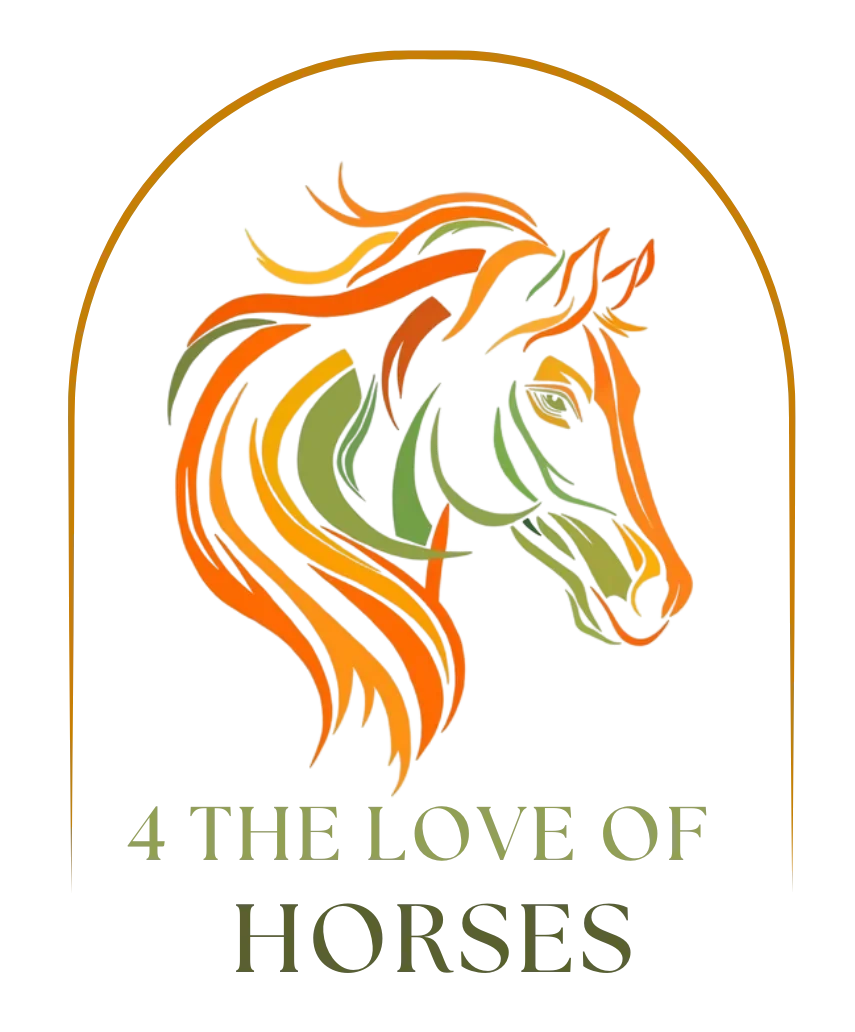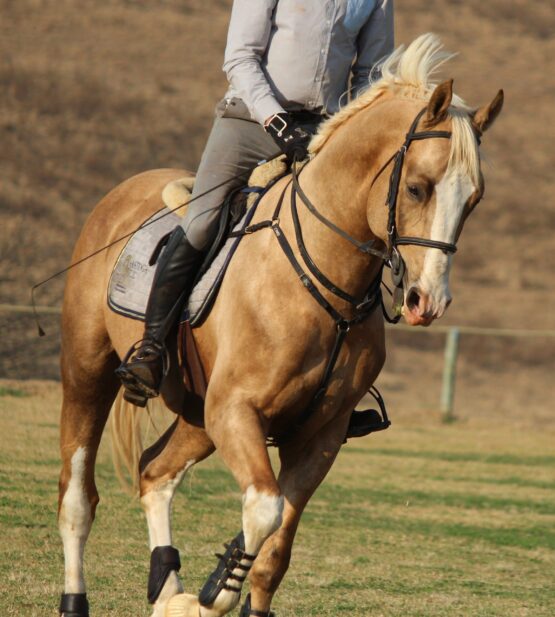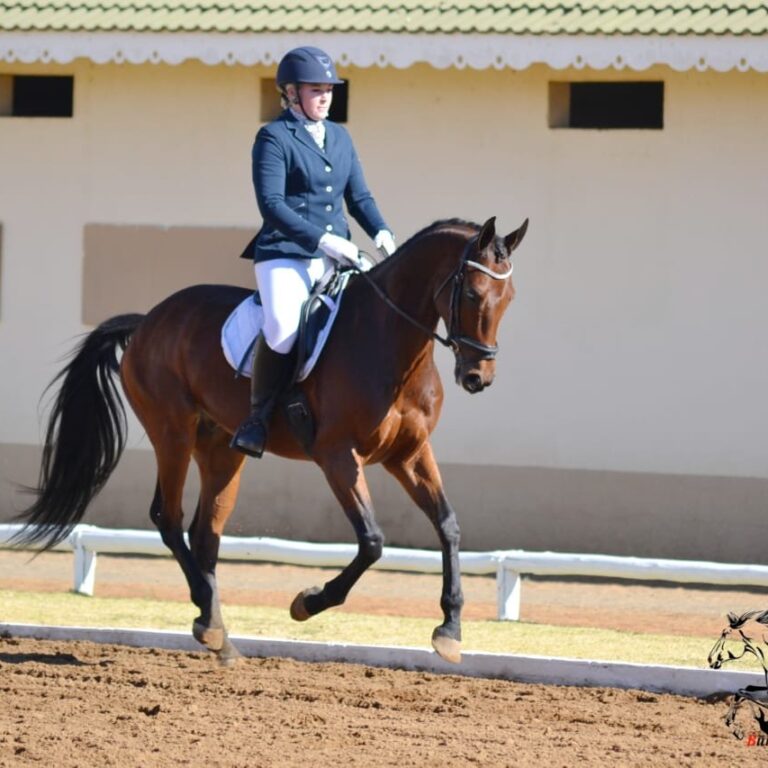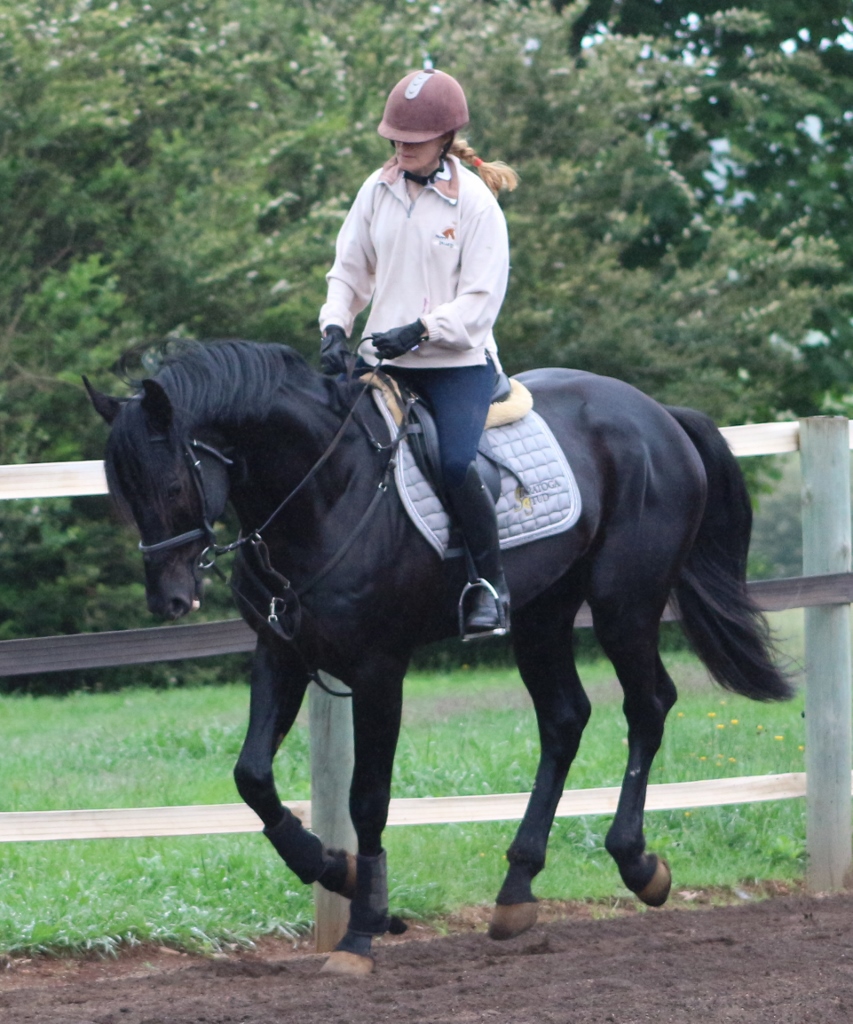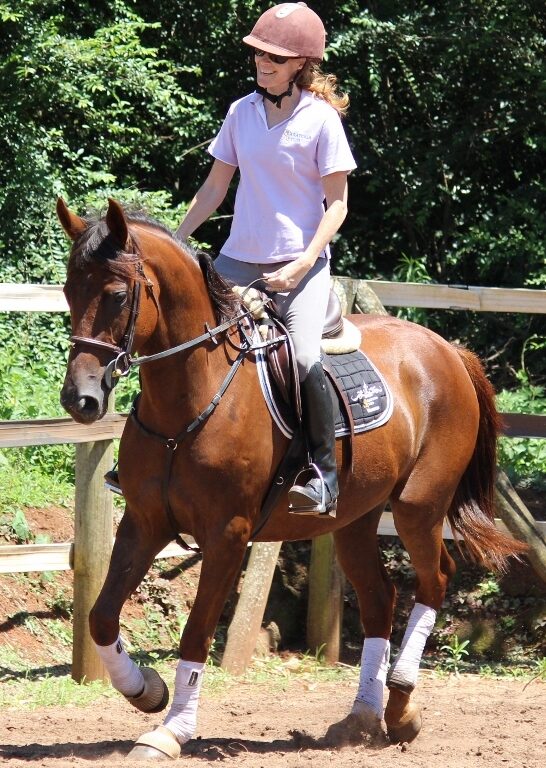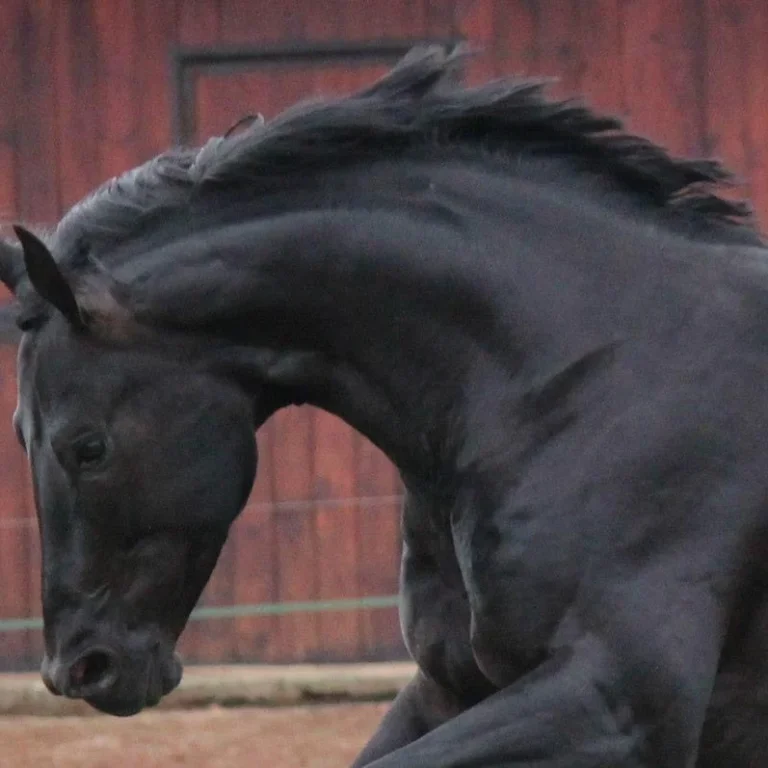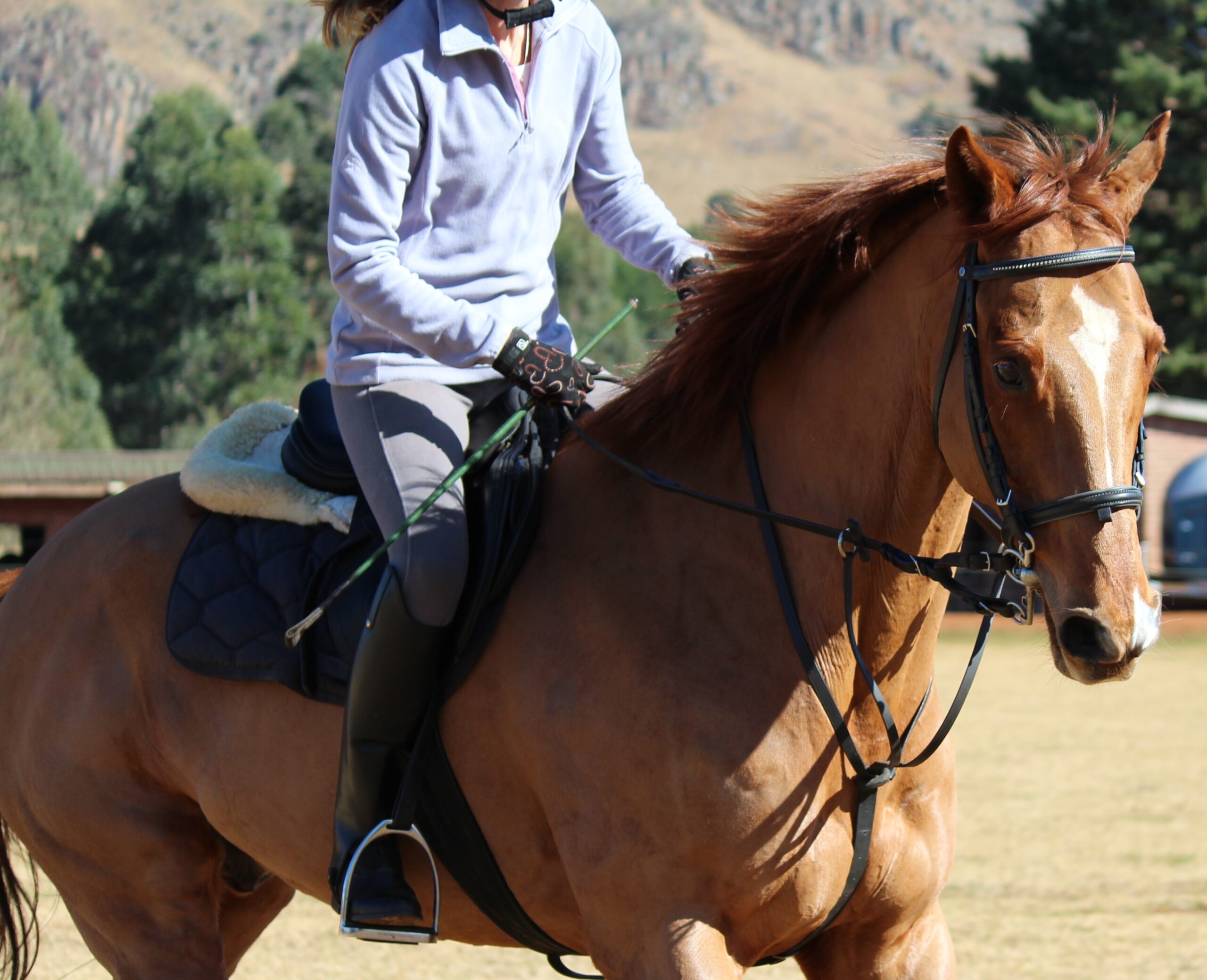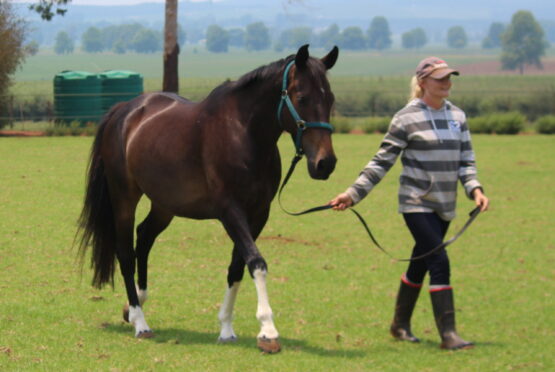Overcoming Fear: A Guide to Desensitizing Your Spooky Horse
In the equestrian world, a common challenge many of us face is working with a spooky horse. These horses, often sensitive and easily startled, can pose a unique set of difficulties. Whether it’s a rustling leaf or an unexpected noise, their heightened reactivity not only tests our skills as riders but also our understanding and empathy as horse lovers.
Overcoming this challenge isn’t about quick fixes or force; it’s about patience, understanding, and a tailored approach. It requires us to step into their hooves, so to speak, and see the world from their eyes. Desensitizing a spooky horse is a journey – one that strengthens the bond between horse and rider, built on a foundation of trust and mutual respect. In this guide, I aim to share with you the techniques and insights I’ve gathered over the years, to help you and your horse navigate this journey together.
Understanding the Spooky Horse
Understanding why a horse becomes spooky is the first step in helping them overcome their fears. The root of this behavior often lies in their natural instincts. Horses are prey animals, and their survival in the wild depends on their ability to react quickly to potential threats. This instinctual behavior is ingrained in even the most domesticated horses, causing them to be naturally alert and easily startled.
However, beyond instinct, a horse’s past experiences play a significant role in shaping their behavior. A horse that has had negative or traumatic experiences, such as rough handling, insufficient training, or even an accident, may develop a heightened sense of fear. For instance, if a horse has had a bad experience with a loud noise, they might become anxious every time they hear a similar sound.
Understanding these behaviors from your horse’s perspective is vital. It requires empathy and patience. Instead of viewing them as just ‘being difficult’, it’s important to recognize that their actions are often driven by fear, not disobedience.
Recognizing the signs of fear and anxiety in horses is also crucial. These can vary but often include physical and behavioral cues such as:
- Tense muscles or trembling.
- Sweating excessively, especially on cool days.
- Whites of the eyes showing, or eyes appearing wide and staring.
- Ears pinned back or flicking back and forth rapidly.
- Snorting, stamping, or tail swishing.
- Rapid breathing or holding their breath.
- Trying to turn away or bolt from the feared object or situation.
Identifying these signs early can help in addressing their fears before they escalate. Understanding why horses become spooky, and recognizing their fear responses, is the first step in developing a successful desensitization strategy. This empathy and insight into their world lay the groundwork for building a trusting and secure relationship with your horse.
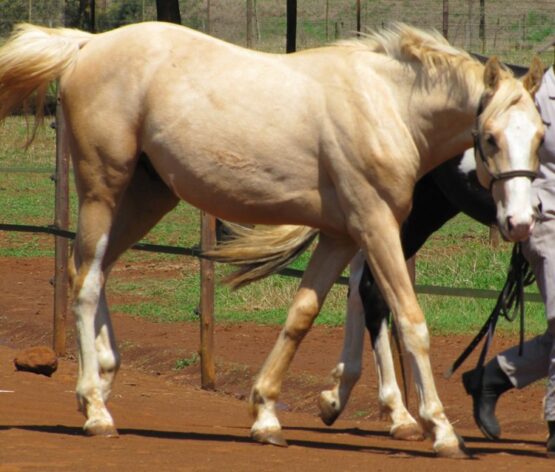
Building Trust
Before embarking on the journey of desensitizing a spooky horse, the cornerstone of your efforts must be trust. A horse must see you as a leader they can rely on, someone who is consistent, calm, and understanding. This trust doesn’t develop overnight; it’s fostered through consistent, positive interactions over time.
One of the most effective ways to build trust is through consistent handling. Horses thrive on routine and predictability. By handling your horse in a consistent manner every day, they learn to understand what to expect from you, which in turn reduces their anxiety. This includes everything from the way you approach them, to how you groom, feed, and exercise them.
Spending quality time together is another key aspect of building trust. This doesn’t always mean riding; it can be as simple as spending time in their presence. Quietly sharing space with your horse, whether it’s grooming them, hand-grazing, or just sitting in their stall or paddock, can significantly strengthen your bond. These moments allow your horse to get comfortable with your presence and understand that you’re a source of safety and comfort.
Your demeanor plays a crucial role in how your horse perceives you. A calm and assertive presence can be immensely reassuring to a spooky horse. They are incredibly sensitive to our emotions and reactions. If you’re anxious or tense, your horse will likely mirror those feelings. On the other hand, if you are calm and composed, it helps them feel secure and less anxious. This doesn’t mean being emotionless or stern; it’s about being confident and gentle in your interactions, providing a sense of stability for your horse.
Remember, building trust is a gradual process. There will be setbacks and challenges, but with patience and consistent positive interactions, your horse will start to see you as a trusted leader. This foundation of trust is essential for effectively and safely desensitizing your spooky horse.
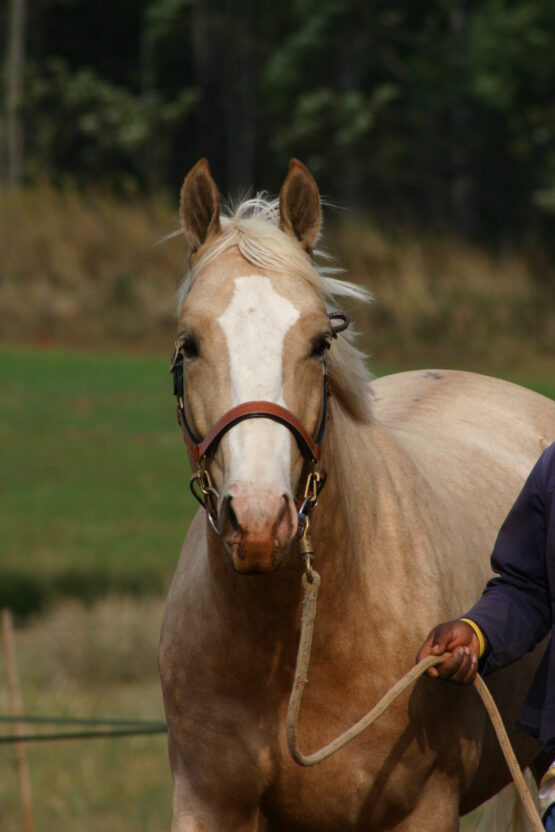
Desensitization Techniques
Desensitizing a spooky horse involves gradually and systematically exposing them to their fears in a controlled manner. There are several techniques to achieve this, with habituation and counterconditioning being among the most effective.
Habituation is the process of exposing the horse to a frightening stimulus at a very low level, allowing them to get used to it over time. The key here is to start with the stimulus at an intensity that doesn’t provoke a full-blown fearful reaction. For example, if your horse is scared of plastic bags, begin by placing a stationary plastic bag at a distance where they notice it but don’t panic. Gradually, over days or weeks, you can move the bag closer, and eventually gently touch them with it, always ensuring they remain below their fear threshold.
Counterconditioning involves changing the horse’s emotional response to a scary stimulus. It’s often paired with positive reinforcement. If your horse is afraid of sudden movements, start by making small, deliberate movements while rewarding them with treats or gentle pats for calm behavior. Gradually increase the intensity of the movements, always rewarding calmness. The goal is to have the horse associate the previously scary stimulus with positive experiences.
Systematic Desensitization is a step-by-step approach combining habituation and counterconditioning. For instance, if your horse is afraid of clippers, start by turning the clippers on at a distance. Reward their calmness, and then gradually bring the clippers closer over several sessions, always pairing the presence of the clippers with something positive.
Here are some practical tips for these techniques:
- Go Slowly: Progress at a pace that your horse is comfortable with. Pushing too fast can backfire.
- Stay Calm: Your calm demeanor is crucial. If you’re nervous, your horse will pick up on it.
- Be Consistent: Consistency is key in reinforcing positive experiences.
- Watch for Signs of Stress: If your horse shows signs of stress, take a step back and reduce the intensity of the stimulus.
By using these desensitization techniques, you can help your spooky horse gradually overcome their fears in a safe and controlled manner. Remember, the goal is not to eliminate their natural instinct to react but to help them learn that they can trust you and feel safe in their environment, even with potential scary stimuli around.
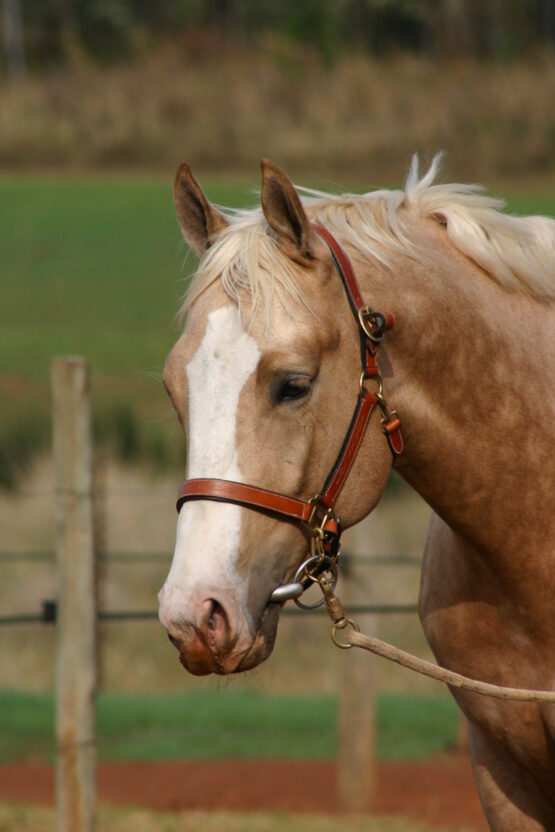
Creating a Desensitization Plan
Creating a personalized desensitization plan for your spooky horse is an essential step in helping them overcome their fears. This plan should be tailored to your horse’s specific needs, fears, and temperament. Here’s how you can create an effective desensitization plan:
- Identify the Fears: Start by listing the specific things that spook your horse. It could be anything from loud noises to unfamiliar objects.
- Set Realistic Goals: For each fear, set a clear, achievable goal. For example, if your horse is scared of water, your goal might be to have them calmly walk through a puddle.
- Break It Down: Break each goal into smaller, manageable steps. Using the water example, the first step could be to lead your horse near a small, shallow puddle and let them observe it from a comfortable distance.
- Gradual Progression: Plan to gradually increase the challenge in each step. Once your horse is comfortable at one step, you can move to the next one. Remember, ‘gradual’ can mean different things for different horses. It’s about finding the right pace for your horse.
- Include Rest Days: Just like humans, horses need time to process and relax. Make sure your plan includes days off.
- Monitor and Adjust: Be prepared to adjust your plan based on your horse’s responses. If a particular step is causing too much stress, it’s okay to take a step back and spend more time on the previous step.
- Consistent Schedule: Try to work on the desensitization exercises at the same time each day. This consistency helps the horse understand and anticipate what is expected.
- Record Keeping: Keep a journal of your progress. Note what works and what doesn’t, how your horse reacted, and any changes you made to the plan.
The importance of not rushing the process cannot be overstated. Desensitization is not a race. It’s about building confidence and trust, and this takes time. Patience is key. Each horse will progress at their own pace, and it’s important to respect that. Rushing can undo progress and damage the trust you’ve worked hard to build.
Remember, a desensitization plan is not set in stone. It should be flexible, adapting to your horse’s individual learning curve and emotional state. With a well-thought-out plan, a patient approach, and a willingness to adjust as needed, you can help your horse become more confident and less reactive to the things that once scared them.
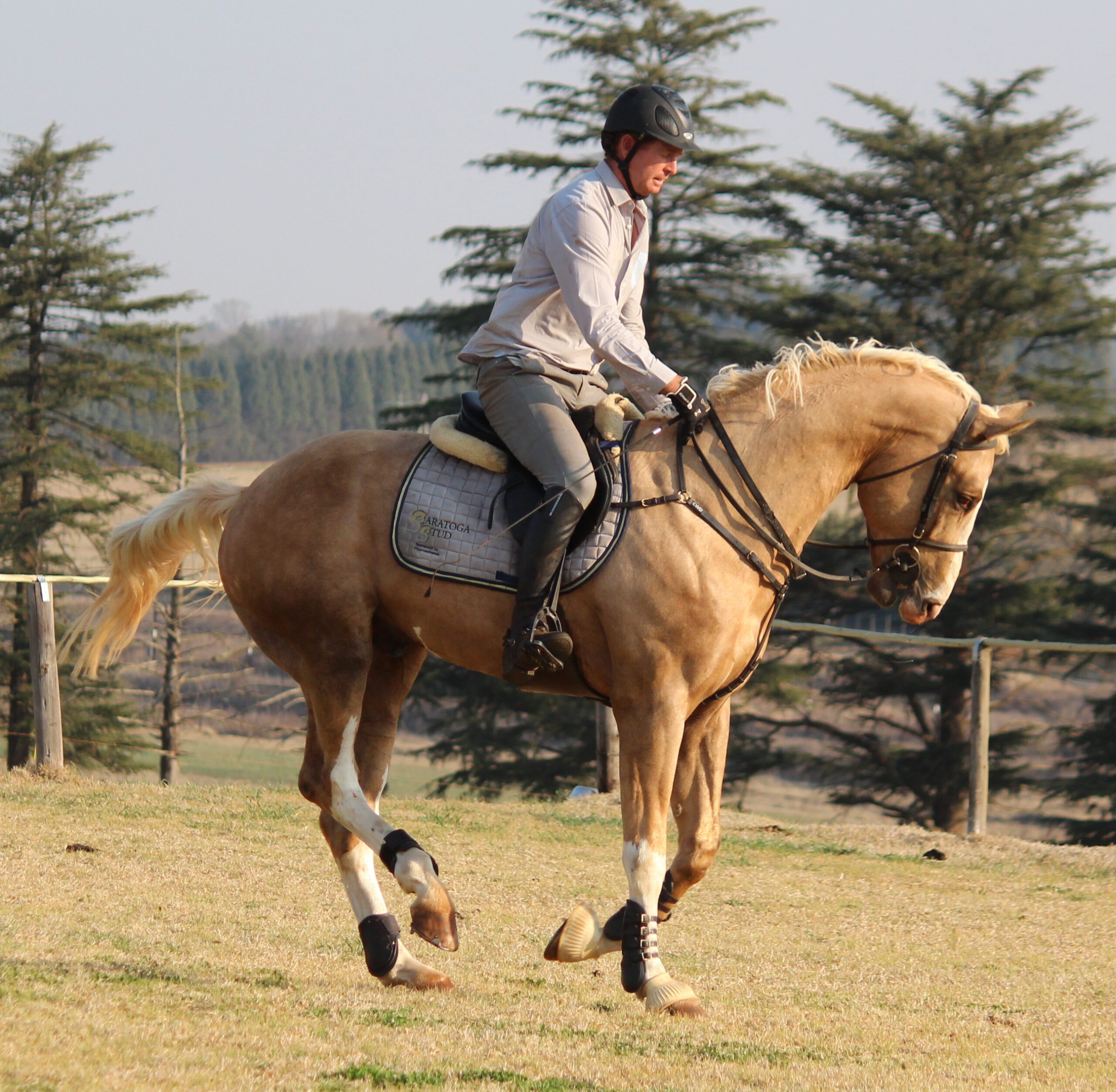
Safety First
When working with a spooky horse, safety should always be your top priority, both for you and your horse. The unpredictability of a fearful horse can lead to dangerous situations, making it crucial to take proper precautions.
Prioritizing Safety for Both Horse and Handler:
- Understand Your Horse’s Threshold: Know the signs that indicate your horse is getting too stressed or scared. It’s important to stop before reaching a point where they might panic and potentially cause harm.
- Work in a Familiar Environment: Start in a controlled, safe environment that your horse is familiar with. An enclosed arena or a quiet paddock can be ideal.
- Have a Safe Exit Strategy: Always plan an escape route in case the horse becomes uncontrollable. This is especially important in enclosed spaces.
Seeking Professional Help:
- If you’re unsure about how to handle a specific fear or behavior, don’t hesitate to seek help from a professional trainer or behaviorist.
- Look for signs like no improvement over time, extreme reactions, or if you feel overwhelmed or unsafe. These are indicators that professional intervention might be necessary.
- A fresh perspective from a professional can provide new strategies and reassurance.
Using Protective Gear and Creating Safe Environments:
- Protective Gear: As a handler, always wear protective gear such as a helmet and safety vest. Ensure your horse is also equipped with appropriate gear, like boots or bandages, to protect them from injury.
- Safe Environment: Remove any potential hazards from the training area. Ensure fencing is secure and the surface is safe to work on.
- Appropriate Equipment: Use equipment that you and your horse are comfortable with. Harsh bits or overly tight tack can cause discomfort and worsen fear responses.
- Assistance: Have someone nearby when trying new exercises, especially in the early stages of desensitization. An extra pair of hands or eyes can be invaluable in maintaining safety.
Remember, desensitization is about building confidence and trust in a safe and controlled manner. The well-being of both you and your horse is paramount, and taking the necessary precautions can ensure a positive and productive training experience.
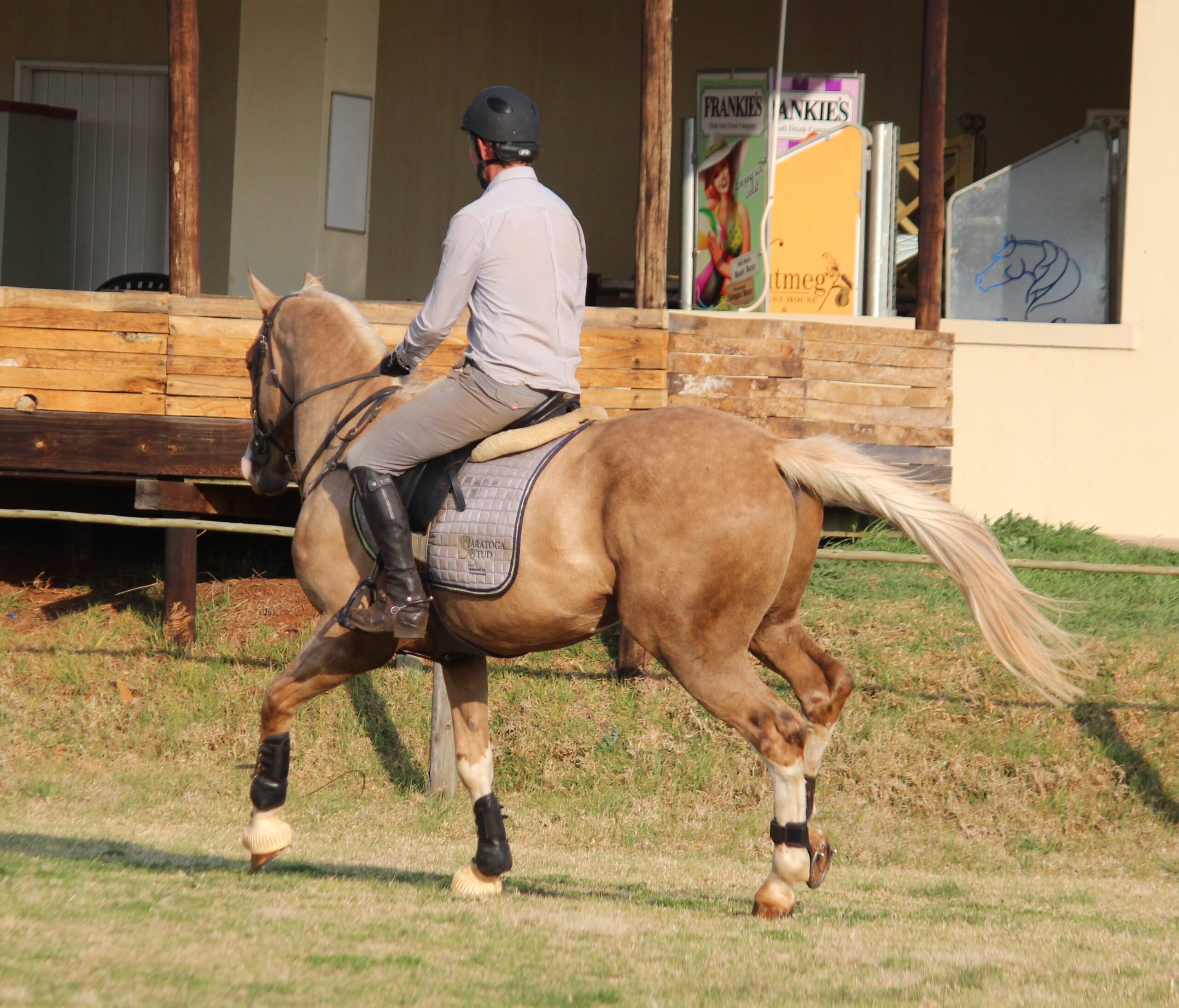
Celebrating Progress
In the journey of desensitizing a spooky horse, celebrating small victories is not just rewarding, it’s essential. Each step forward, no matter how small, is a step in the right direction and deserves recognition. These small achievements accumulate over time, leading to significant progress.
Recognizing and Celebrating Small Victories:
- Acknowledge the Effort: Even if it’s just a calm walk past a previously scary object or a moment of relaxation in a stressful situation, acknowledge these moments.
- Positive Reinforcement: Reward your horse with treats, a favorite activity, or simply a gentle pat and kind words. This not only reinforces good behavior but also strengthens your bond.
- Keep a Progress Journal: Documenting your journey can be incredibly rewarding. Looking back on where you started and seeing how far you’ve come is motivating for both you and your horse.
Personal Stories and Case Studies:
Case Study: Overcoming Trailer Fear – The Story of Mon Ami
Mon Ami (aka Mister) was a striking bay gelding with a gentle disposition but a deep-seated fear of trailers. When I first met him, his reluctance to even approach a trailer was palpable. His previous experiences had left him panicked at the mere sight of one, making travel to events or veterinary appointments a significant challenge.
Initial Assessment and Building Trust: The journey began with gaining Mister’s trust. I spent weeks working with him on basic ground manners and establishing a bond. This foundational trust was crucial for the steps that followed.
Gradual Exposure: We started by simply walking near the trailer, rewarding calm behavior, and not pushing him beyond his comfort zone. Each session was short but consistent, ensuring Mister didn’t feel overwhelmed.
Creating Positive Associations: Gradually, we moved closer to the trailer, incorporating positive reinforcement. Feeding him near the trailer and offering treats helped Mister associate the trailer with positive experiences.
Incremental Progress: Over time, Mister learned to stand calmly next to the trailer. The next big step was getting him to put a foot on the ramp. This was a slow process, filled with patience and encouragement. Each hoof on the ramp was celebrated, and I ensured not to rush him into the next step until he was ready.
The Breakthrough: After several weeks, Mister finally stepped into the trailer. It was a monumental moment. We didn’t go anywhere; the goal was just to have him stand inside calmly. I spent time with him in the trailer, reinforcing the idea that it was a safe space.
Consistency and Patience: The following sessions involved loading and unloading calmly, with lots of praise and treats. We kept these sessions short to avoid overstressing him.
The Victory: The day Mister walked into the trailer without hesitation marked a significant victory in our journey. It was not just about him entering the trailer but about the trust and understanding we had built. He had learned that the trailer was not a thing to fear, and I had learned the extent of what patience and empathy could achieve.
Reflection: Mister’s transformation was not just a triumph in overcoming his fear of trailers; it was a testament to the power of trust, patience, and positive reinforcement in horse training. It reminded me that with time and understanding, we can help our equine partners overcome even their deepest fears.
Case Study: First Show Grounds Experience – The Journey of Don Colour and Ben
Don Colour, a spirited young stallion with a coat as striking as his name suggests, faced a daunting challenge during his first visit to the show grounds. With an environment bustling with unfamiliar sights, sounds, and smells, his nervousness was evident. Under the saddle, however, was Ben, a rider known for his sympathetic and understanding approach to horses.
Initial Exposure: Upon arrival, Don Colour’s apprehension was clear. The clatter of hooves on concrete, the murmur of the crowd, and the fluttering of flags seemed to overwhelm him. Ben, recognizing the importance of patience, allowed Don Colour to take in his surroundings without forcing him forward.
Sympathetic Guidance: Ben’s approach was gentle yet confident. He led Don Colour around the quieter areas of the grounds, allowing the stallion to observe from a distance. This slow introduction was crucial in preventing an overload of stimuli.
Building Confidence: Over the day, Ben and Don Colour ventured a little closer to the busier parts of the show. Ben remained calm and assertive, offering reassuring pats and quiet words of encouragement. This consistent, calm demeanor helped Don Colour understand that there was nothing to fear.
Gradual Desensitization: Over time, Don Colour’s tension began to ease. He started showing curiosity instead of fear, his ears pricking forward as he looked around. Ben took these signs as opportunities to gently guide Don Colour closer to the activities, always mindful of his reactions.
Overcoming Fear: After the initial ride the transformation was remarkable. Don Colour, once skittish and uncertain, began to move with more confidence. The sights and sounds that once startled him now seemed to pique his interest more than provoke fear.
The Pinnacle Moment: The true test came when Ben decided to ride Don Colour around the show ring. With a crowd watching, it was a scenario ripe for anxiety. However, Don Colour, guided by Ben’s steady presence, performed admirably. He was attentive but calm, a far cry from the nervous stallion he was upon arrival.
Reflection: This experience was more than just acclimating Don Colour to the show environment; it was a lesson in trust and understanding between horse and rider. Ben’s empathetic approach, combined with a gradual and consistent exposure, allowed Don Colour to overcome his fears and settle into the show grounds environment. It was a testament to the power of patience and the strong bond that can develop between a horse and rider when approached with care and understanding.
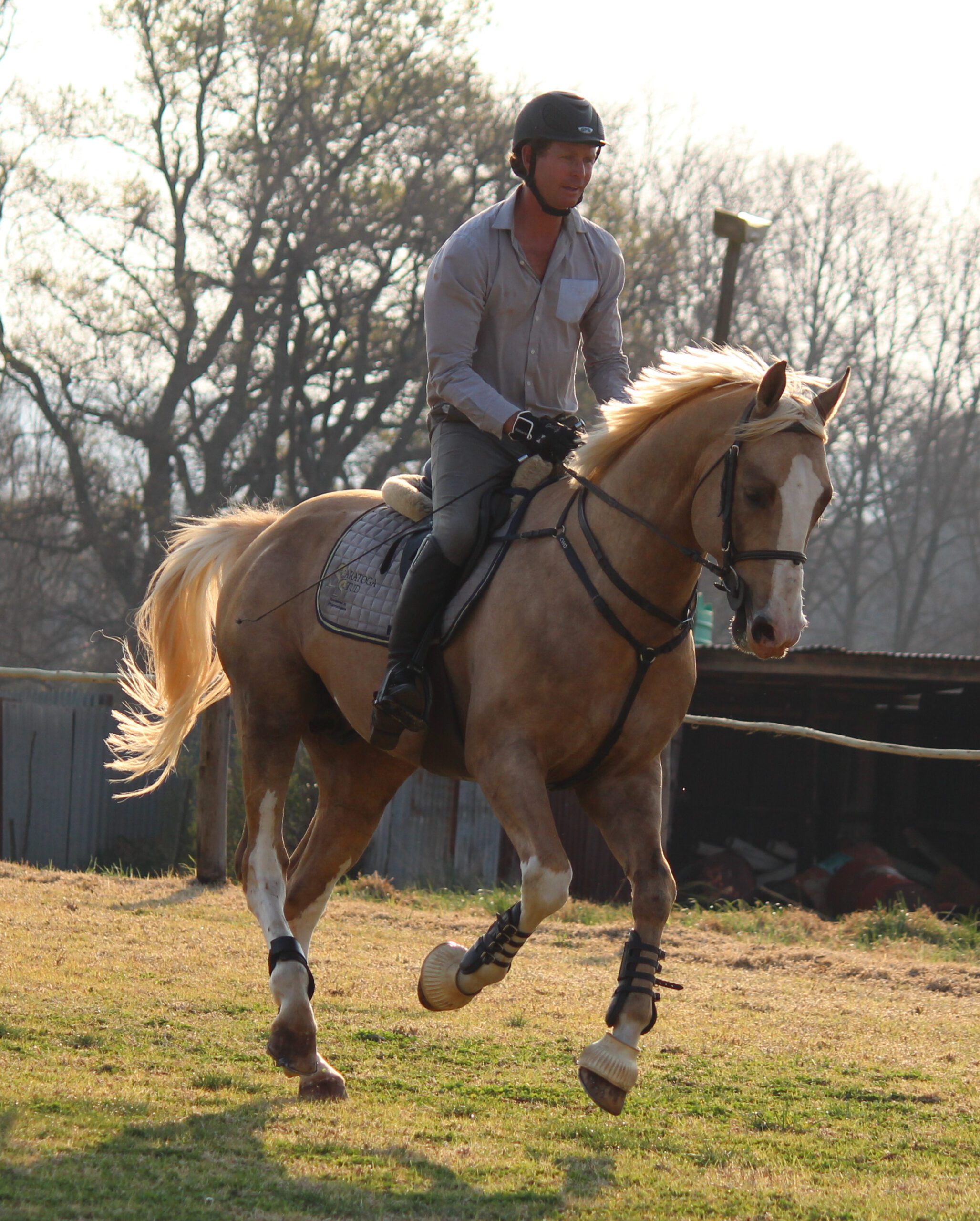
Patience and Persistence
As we journey together through the process of desensitizing our equine companions, it’s crucial to embrace two key virtues: patience and persistence. The path to helping a spooky horse overcome their fears is rarely a straight line. Progress can be slow, and at times, it may even feel like we are taking steps backward rather than forward.
Patience is essential in this journey. It’s important to remember that each horse is an individual, with their own set of experiences and perceptions. What might seem trivial to us can be a significant challenge for them. Their pace of learning and adapting is their own, and as their guides and partners, we must respect and work within their comfort zone.
Persistence, too, is a cornerstone of success in desensitization. Consistency in our efforts, even in the face of challenges, reinforces the training and trust-building that are fundamental to this process. There will be days when progress seems minimal, or when a previously conquered fear resurfaces. These moments are not failures, but rather opportunities for learning and growth – for both the horse and the rider.
It’s also important to recognize and celebrate the small victories along the way. Acknowledging these moments helps maintain motivation and highlights the positive steps being taken, no matter how small they may seem.
Remember, the journey of desensitization is as much about building a deep and trusting relationship with your horse as it is about overcoming specific fears. Patience and persistence are not just tools to achieve an end goal; they are expressions of the love and commitment we have for our equine partners. So, let’s continue this journey with compassion and determination, knowing that the bond it creates is as rewarding as the progress we make.
Every horse is different
In the realm of horse training, especially when it comes to desensitization, it’s pivotal to recognize and embrace the uniqueness of each horse. Just as every person has their own set of fears, preferences, and learning styles, so does every horse. This diversity is what makes working with horses both challenging and profoundly rewarding.
The techniques and strategies that are effective for one horse might not yield the same results as another. For instance, a method that soothes and reassures one horse might overstimulate or confuse another. This variance is not a sign of failure; rather, it’s a natural aspect of the individualistic nature of horses.
As you work with your horse, take the time to understand their specific needs and responses. Observe how they react to different stimuli and training approaches. Some horses may respond better to a gradual, gentle introduction to their fears, while others may benefit from a more direct but still compassionate approach.
Experimentation and adaptation are key components in finding what works best for your horse. Be prepared to modify your techniques, and even step back and reassess your approach if necessary. Remember, it’s not about adhering rigidly to a predetermined method, but about discovering and employing the strategies that resonate most effectively with your horse.
Once you find the methods that work best for your horse, stick with them. Consistency in approach not only aids in the desensitization process but also helps in strengthening the trust and understanding between you and your horse. This consistency provides a sense of security and predictability for your horse, making it easier for them to process and overcome their fears.
Encouragingly, as you journey through this process, not only will you help your horse become more confident and calm, but you’ll also deepen the bond you share. Each horse’s uniqueness is a gift, offering us the opportunity to learn and grow alongside them. So, embrace the individuality of your horse, discover what works best for them, and embark on this fulfilling journey with patience, understanding, and dedication.
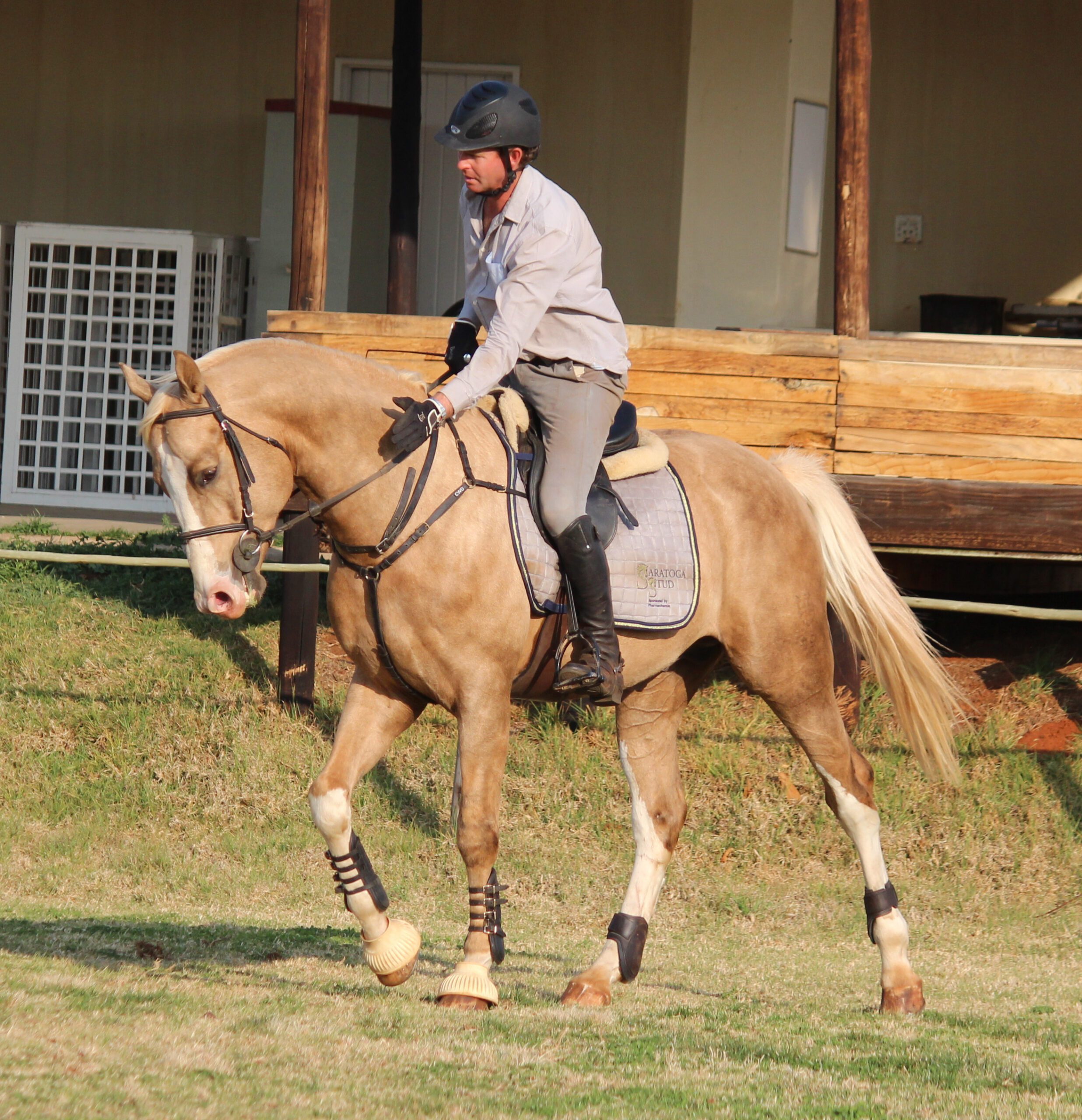
Conclusion
Desensitizing a spooky horse is a journey that requires understanding, patience, and a methodical approach. It’s about recognizing the innate instincts of horses as prey animals and acknowledging their past experiences that contribute to their fears. Building a foundation of trust is the first and most crucial step, as it sets the tone for a successful desensitization process.
We discussed various techniques such as habituation, counterconditioning, and systematic desensitization, emphasizing the importance of a gradual approach. Every small step forward is a victory and should be celebrated as such. Creating a personalized plan and adjusting it based on your horse’s responses allows for a tailored approach, catering to the unique needs of each horse.
Safety for both the horse and handler is paramount. Equipping yourself with the right knowledge, and protective gear, and, when necessary, seeking professional help, ensures a safe and effective training environment. Remember, desensitization is not a quick fix; it’s a journey that unfolds over time.
To all equestrians facing this challenge, know that you are not alone. Many have walked this path and found success. Your patience, understanding, and persistent efforts will not only help in desensitizing your horse but will also deepen the bond you share with your equine partner. Trust the process, celebrate each step forward, and take pride in knowing that you are providing your horse with a great gift – the gift of confidence and trust.
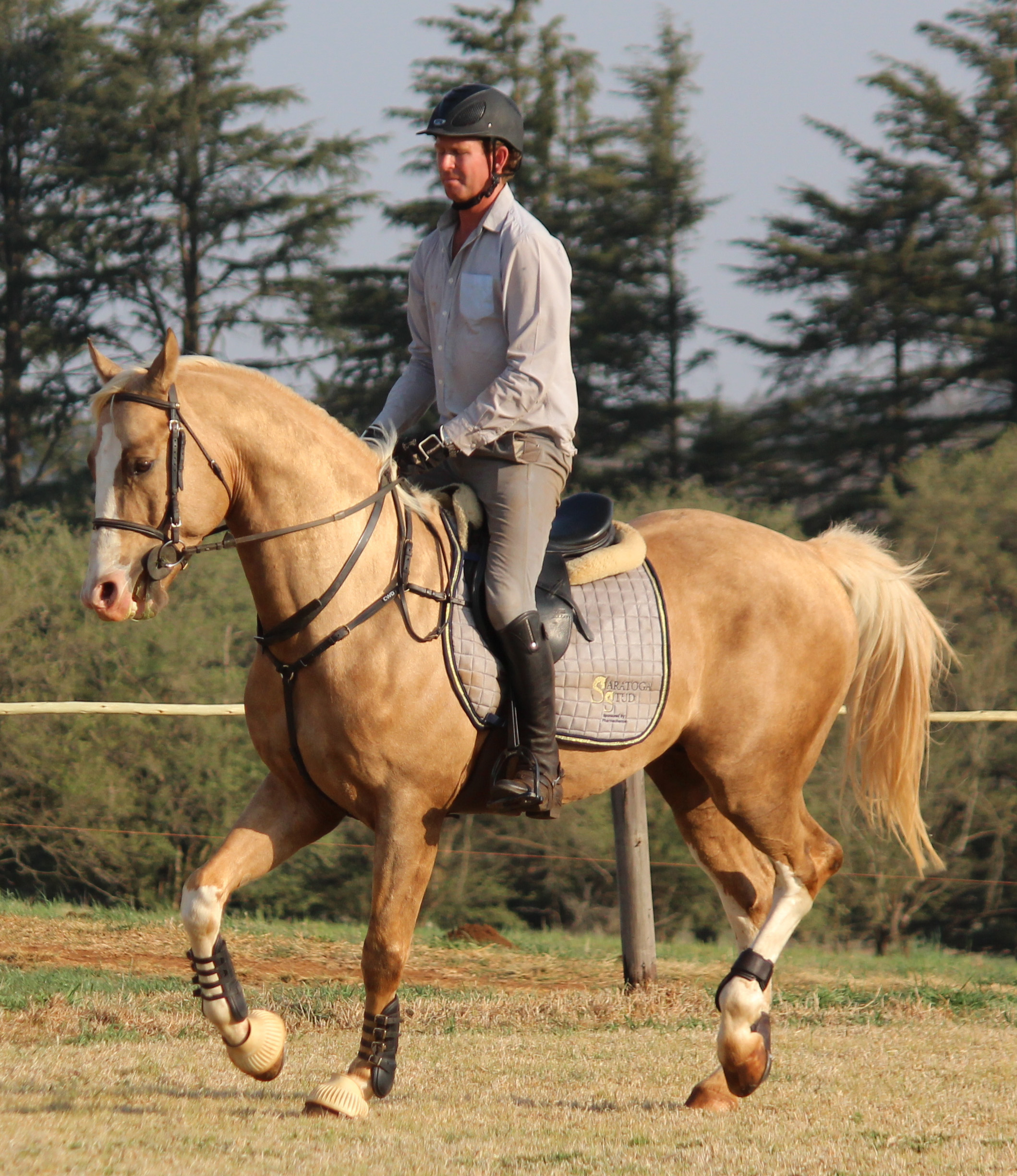
Additional Resources
For those looking to expand their knowledge and find further guidance on desensitizing spooky horses, there are numerous resources available. Here’s a list of books, articles, and online resources that I have found particularly helpful:
Books:
- “Understanding Horse Behavior” by Lesley Skipper – Offers insights into why horses behave the way they do.
- “The Horse Behavior Problem Solver” by Jessica Jahiel – Provides practical solutions to common behavioral issues.
- “101 Ground Training Exercises for Every Horse & Handler” by Cherry Hill – Includes exercises that can be used for desensitization.
Articles:
- “The Science of Spooking” in Equus Magazine – Explores the psychological aspects of spooky behavior in horses.
- “Building Confidence in Your Horse” on TheHorse.com – Provides tips on building a horse’s confidence through training.
- “Desensitization and Counterconditioning” in Practical Horseman – Offers a step-by-step guide to these techniques.
Online Resources:
- The Equine Behavior Forum (www.equinebehaviorforum.org) – A platform for discussions and advice on horse behavior.
- Horse & Hound Forum (forums.horseandhound.co.uk) – A community where equestrians share experiences and advice.
- YouTube Channels like Warwick Schiller and The Willing Equine – These channels offer video tutorials on horse training and behavior management.
Professional Support:
- If you feel overwhelmed or if your horse’s behavior is beyond your skill level, don’t hesitate to seek help from a professional. Equine behaviorists and professional trainers can provide personalized advice and hands-on assistance.
- You can find qualified professionals through equestrian organizations or local equestrian centers. Online directories like the International Association of Animal Behavior Consultants (iaabc.org) can also be a useful resource.
Remember, each horse is unique, and what works for one might not work for another. These resources can provide you with a broad range of strategies and insights, helping you find the most effective approach for your horse.
Further reading
8 Tips to Bombproof & Desensitize a Horse If you are serious about desensitizing your horse, just one session won’t cut it. You ought to introduce the offending object to the animal over and over again …
Train Away the Fear: How to Ride Spooky Horses Desensitizing can help any horse overcome fears. Gather an assortment of objects that your horse might find intimidating. Tarps, plastic bags, ropes, flags, …
How to Desensitize Your Horse – How To Dressage Podcast Desensitizing your horse to scary objects · Start with groundwork. Lead your horse over to the object that he is afraid of. · Using a training ball can be a great ..
